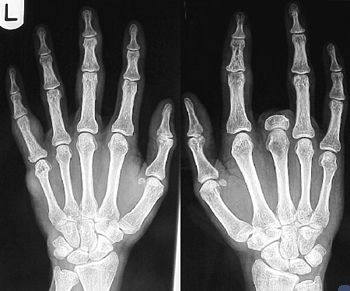Article
Ultrasound May Provide More Precise Essential Tremor Treatment
Author(s):
A team of investigators have revisited ultrasound as a tool for providing more targeted essential tremor treatment.

Essential tremor is the most common movement disorder, as approximately 4 percent of the entire population experiences disabling shaking and an increased risk of social isolation, phobias, and depression. While a polymorphism in the LINGO1 gene is often present in those patients, the specific cause of the disorder remains unknown.
Drug therapies are available and can help, though up to 50 percent of patients with essential tremor either don’t respond to the medications or find the side effects intolerable. And while creating surgical lesions or electrically stimulating the ventral intermediate nucleus of the thalamus can reduce essential tremor, few patients are willing to undergo such invasive surgeries.
In terms of ultrasound, the technology was investigated in the 1950s, but it was abandoned after it was deemed inadequate for essential tremor. However, more recent advances allow transcranial sonication through the intact human skull, and pairing contemporary high-intensity ultrasound with magnetic resonance imaging (MRI) permits even more precise intracerebral targeting. Therefore, ultrasound may now be appropriate for essential tremor.

To test that theory, researchers at the University of Virginia conducted an open-label, uncontrolled study investigating transcranial-focused ultrasound guided by MRI for the treatment of essential tremor. For one year, the study authors followed 15 patients with a mean age of 66 years who were afflicted with severe, medication-refractory essential tremor for 32 years, on average. In each patient, the treatment intervention targeted the hand that was dominant, or most severely affected.
At the conclusion of the treatment, all patients’ essential tremor improved, with a relative tremor reduction of 75 percent. Improvement was greatest in the targeted hand, and no change was detected in the untreated hand. For 13 of the patients, tremor improved immediately after the procedure and then stabilized throughout the next 12 months. The most common side effects were paresthesias of the face or fingers, though most cases were resolved over time. Four patients experienced persistent paresthesias, and one of those cases was considered a serious adverse event.
The study authors noted that larger studies are needed to determine if the intervention can be used safely and with reproducible efficacy.



